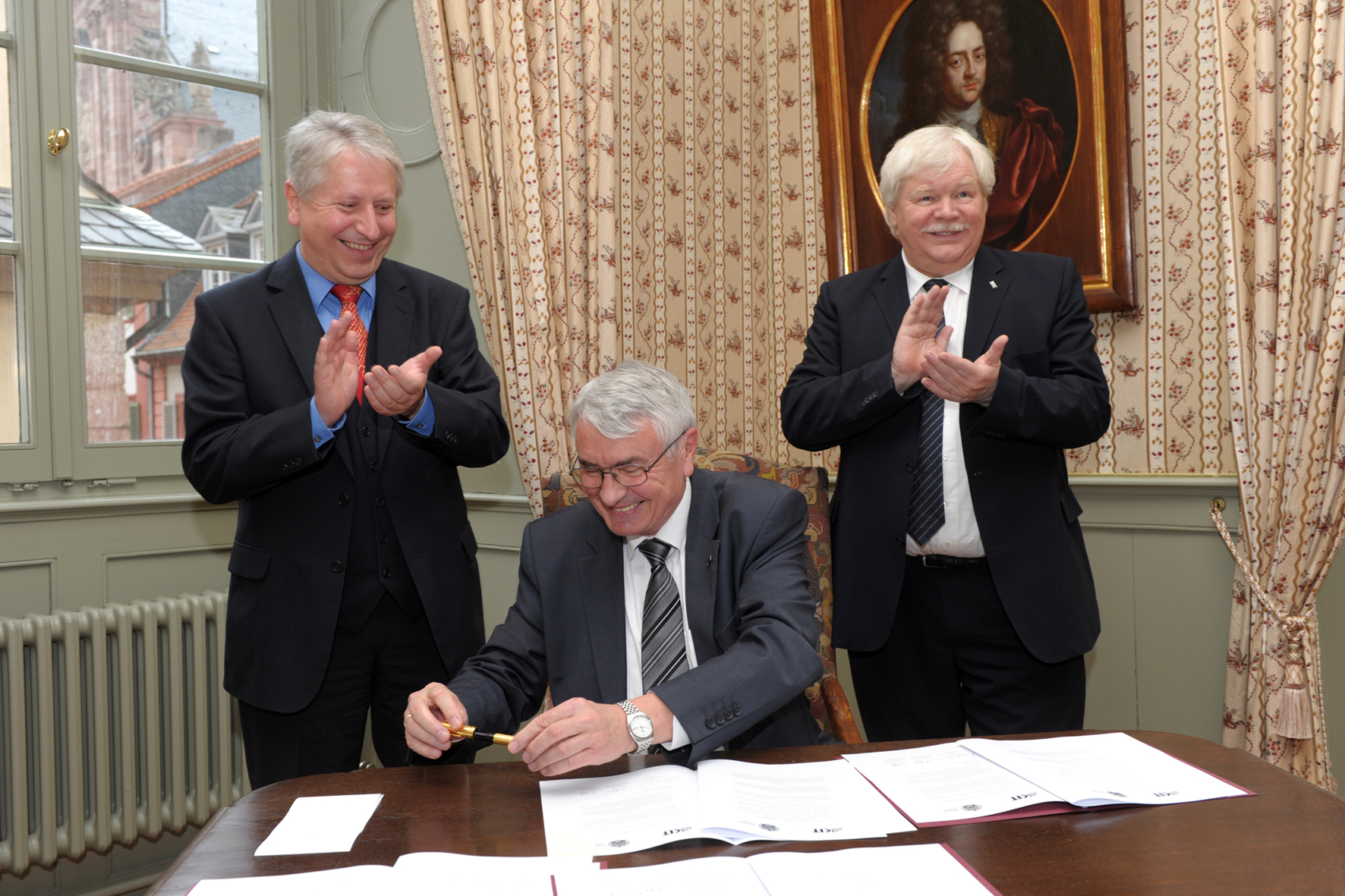
The story of HEiKA begins in 2010, during the preparation of Karlsruhe Institute of Technology (KIT) and Heidelberg University for the third call for proposals within the Excellence Initiative launched by the federal and the state governments.
The following common vision was formulated as a result of an open discussion between both presidential committees on the possible synergies that can be drawn from closer cooperation and their impact on the positioning of both institutions at regional, national and international levels:
By means of the complementary expertise of these two strong academic partners, a unique, competitive research and development area with national unique position and international visibility is to be created.
The aim was
- to further strengthen existing, excellent basic research
- to promote interdisciplinary research approaches to address the major societal challenges and
- to create the space for transformative research approaches, with an "accessible" transition from basic research to innovation
Considering the large differences between the two institutions - the comprehensive Heidelberg University and the KIT as a union of the Technical University and the National Research Center - these common goals should not be pursued comprehensively across both institutions.
Following joint exploratory workshops, five thematic priorities were identified in 2011, within which cooperation should be intensified. These so-called research bridges are characterized by clear complementary competences and a strong intrinsic interest of their "communities" in strategic cooperation.
These five research bridges were: Correlative Imaging Platform (CIP), Medical Technology for Health (MTH), Nature, Technology and Society (NTS), Organic Electronics (OE) and Synthetic Biology (SB).

They were the starting point for the research partnership "Heidelberg Karlsruhe Research Partnership", which was founded in 2011 in the form of a joint scientific institution (according to §6 Abs. 4 Landeshochschulgesetz Baden-Württemberg) between KIT and Heidelberg University and is chaired by the Board of Directors and strategically managed by the Research Board.
Forming the strategic partnership HEiKA
As early as the founding of the HEiKA research partnership, the two universities decided to put the underlying concept and its implementation to the test after four years and have it evaluated by external experts (evaluation period: 01.10.2011 - 30.09.2015).
With the start of internal preparations (2015), this evaluation was perceived and used by both the Research Board and the Board of Directors as a trigger for critical but forward-looking reflection on the goals and concept after the four-year establishment phase.
The discussions with the external reviewers during the evaluation visit in March 2016 clearly stimulated this process and their derived recommendations are highly regarded by the executive committee of both HEiKA partners as trend-setting for the further development of the HEiKA cooperation.

Perhaps the most important result of the evaluation was the recommendation of the panel of experts to extend the already highly valued partnership by further fields (joint courses, innovation and increased promotion of young scientists).
Following this recommendation, the signing of the new HEiKA framework agreement in May 2018 will support and present all bilateral activities between the University of Heidelberg and KIT under one umbrella, the Heidelberg Karlsruhe Strategic Partnership - HEiKA.
The framework agreement extends the existing HEiKA cooperation on the basis of the existing structures to a strategic partnership, which enables a significantly expanded scope of cooperation. Longer-term goals are the establishment of joint research institutes as well as inter-institutional programs and graduate schools. The areas of innovation and transfer should also be tackled together. An example already practiced is InnovationLab, an application-oriented research platform with a focus on technology transfer.

